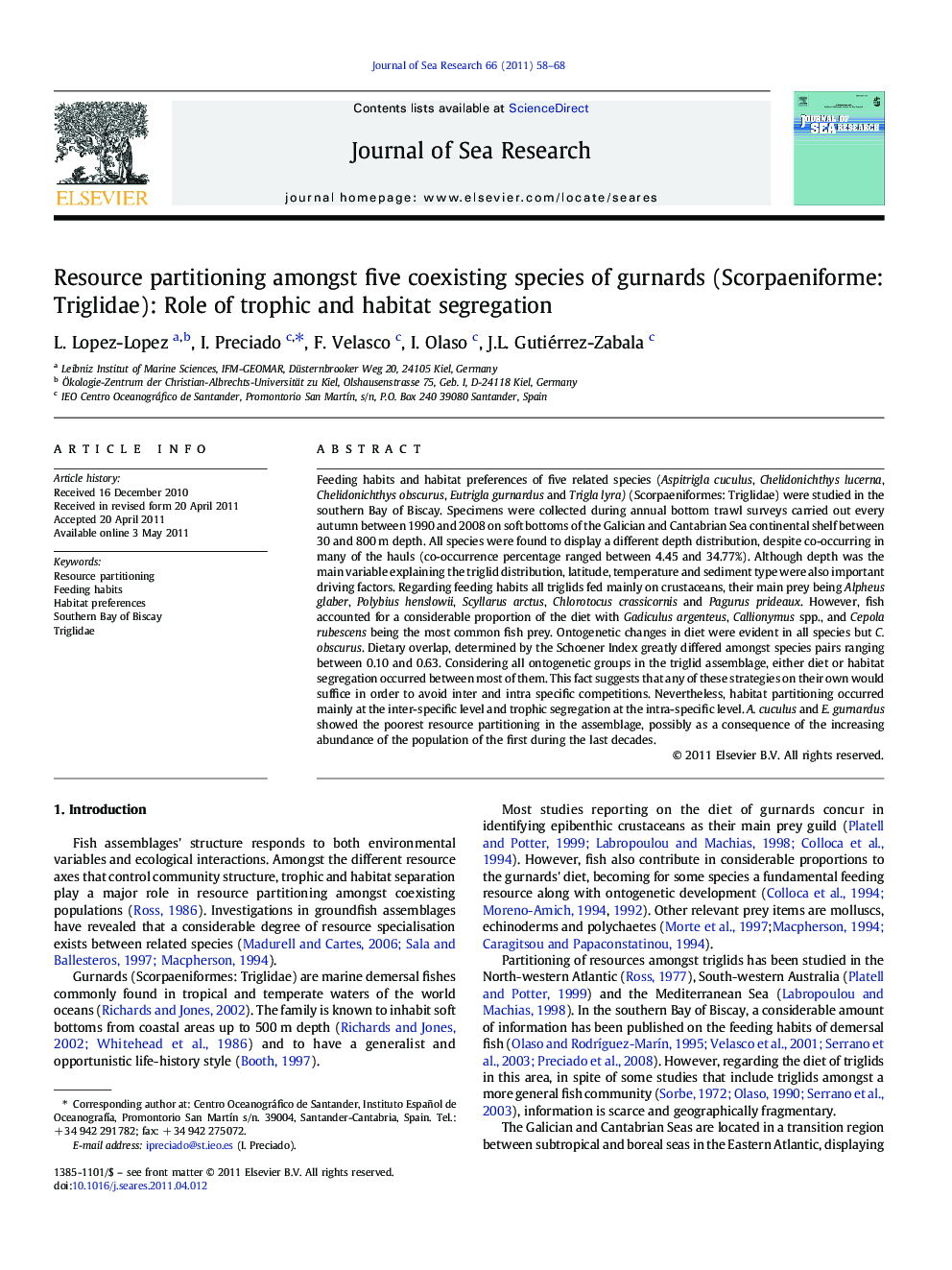| Article ID | Journal | Published Year | Pages | File Type |
|---|---|---|---|---|
| 4550005 | Journal of Sea Research | 2011 | 11 Pages |
Feeding habits and habitat preferences of five related species (Aspitrigla cuculus, Chelidonichthys lucerna, Chelidonichthys obscurus, Eutrigla gurnardus and Trigla lyra) (Scorpaeniformes: Triglidae) were studied in the southern Bay of Biscay. Specimens were collected during annual bottom trawl surveys carried out every autumn between 1990 and 2008 on soft bottoms of the Galician and Cantabrian Sea continental shelf between 30 and 800 m depth. All species were found to display a different depth distribution, despite co-occurring in many of the hauls (co-occurrence percentage ranged between 4.45 and 34.77%). Although depth was the main variable explaining the triglid distribution, latitude, temperature and sediment type were also important driving factors. Regarding feeding habits all triglids fed mainly on crustaceans, their main prey being Alpheus glaber, Polybius henslowii, Scyllarus arctus, Chlorotocus crassicornis and Pagurus prideaux. However, fish accounted for a considerable proportion of the diet with Gadiculus argenteus, Callionymus spp., and Cepola rubescens being the most common fish prey. Ontogenetic changes in diet were evident in all species but C. obscurus. Dietary overlap, determined by the Schoener Index greatly differed amongst species pairs ranging between 0.10 and 0.63. Considering all ontogenetic groups in the triglid assemblage, either diet or habitat segregation occurred between most of them. This fact suggests that any of these strategies on their own would suffice in order to avoid inter and intra specific competitions. Nevertheless, habitat partitioning occurred mainly at the inter-specific level and trophic segregation at the intra-specific level. A. cuculus and E. gurnardus showed the poorest resource partitioning in the assemblage, possibly as a consequence of the increasing abundance of the population of the first during the last decades.
Research highlights► Depth was the most important variable structuring the triglids' assemblage. ► Both habitat and trophic partitioning occurred simultaneously in the assemblage. ► Either diet or habitat segregation sufficed to avoid competition. ► Increasing predator abundance impoverished its resource partitioning. ► The NAO had an indirect effect on the triglids by shaping their prey's variability.
